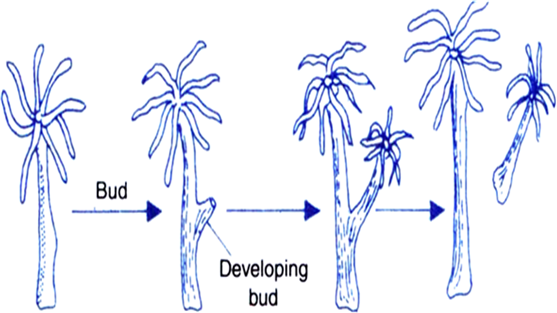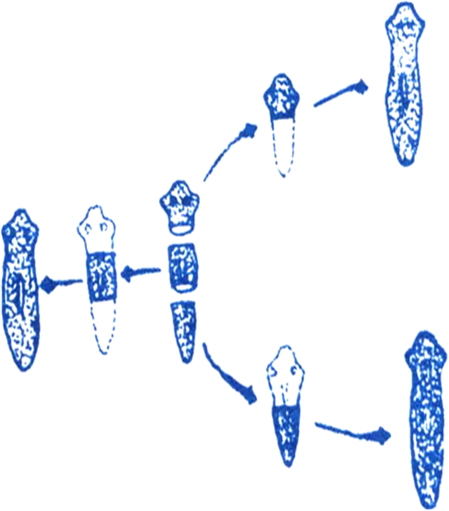Question
Explain budding, spore formation, regeneration and fragmentation modes of asexual reproduction.
Solution
(i) Budding: It is the process of formation of an offspring from an outgrowth called bud of a parent. In Hydra, an outgrowth due to repeated cell division at one specific site forma a bud. These buds develop into tiny individuals and when fully mature, detach from the parent body and become new independent individuals.

Fig. Budding in hydra
(ii) Spore formation- A majority of fungi and bacteria asexually reproduce by sporulation. In fungus, a sporangium develops from the fungal hypha. The nucleus divides several times within the sporangium. Each nucleus gets surrounded by a bit of cytoplasm to form spore. On maturation of sporangium (formation of spores), the sporangium ruptures to liberate a large number of minute spores. The spores develop into new hypha after reaching suitable substratum. Example, Mucor, Rhizopus, Penicillium.
(iii) Regeneration: The ability of an organism to replace its lost body parts is called regeneration. Hydra, Planaria and sponges exhibit regeneration.

Fig. Regeneration on planaria
(iv) Fragmentation: The mature Spirogyra (an alga) breaks into two or more pieces (fragments) and each fragment grows into new individual. The process is called Fragmentation.

Fig. Budding in hydra
(ii) Spore formation- A majority of fungi and bacteria asexually reproduce by sporulation. In fungus, a sporangium develops from the fungal hypha. The nucleus divides several times within the sporangium. Each nucleus gets surrounded by a bit of cytoplasm to form spore. On maturation of sporangium (formation of spores), the sporangium ruptures to liberate a large number of minute spores. The spores develop into new hypha after reaching suitable substratum. Example, Mucor, Rhizopus, Penicillium.
(iii) Regeneration: The ability of an organism to replace its lost body parts is called regeneration. Hydra, Planaria and sponges exhibit regeneration.

Fig. Regeneration on planaria
(iv) Fragmentation: The mature Spirogyra (an alga) breaks into two or more pieces (fragments) and each fragment grows into new individual. The process is called Fragmentation.





